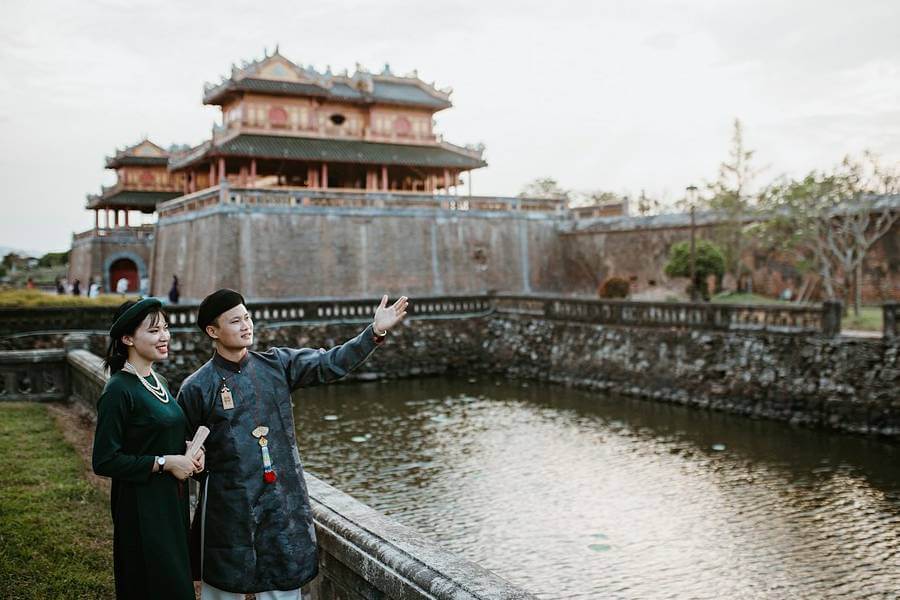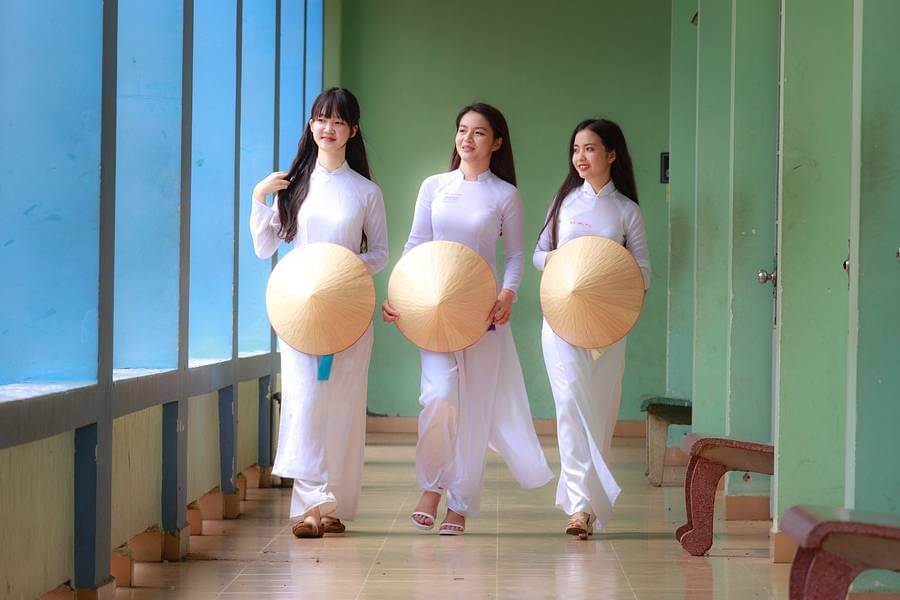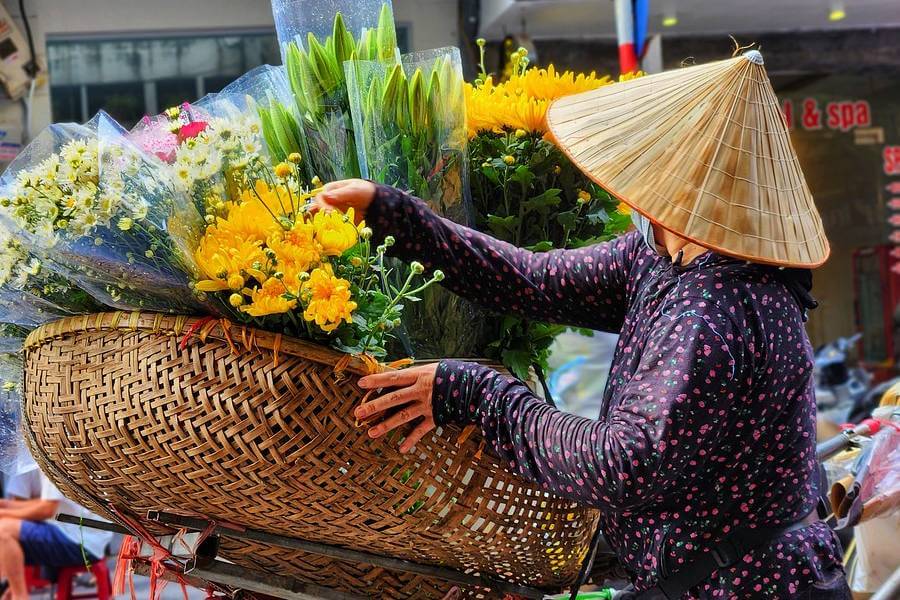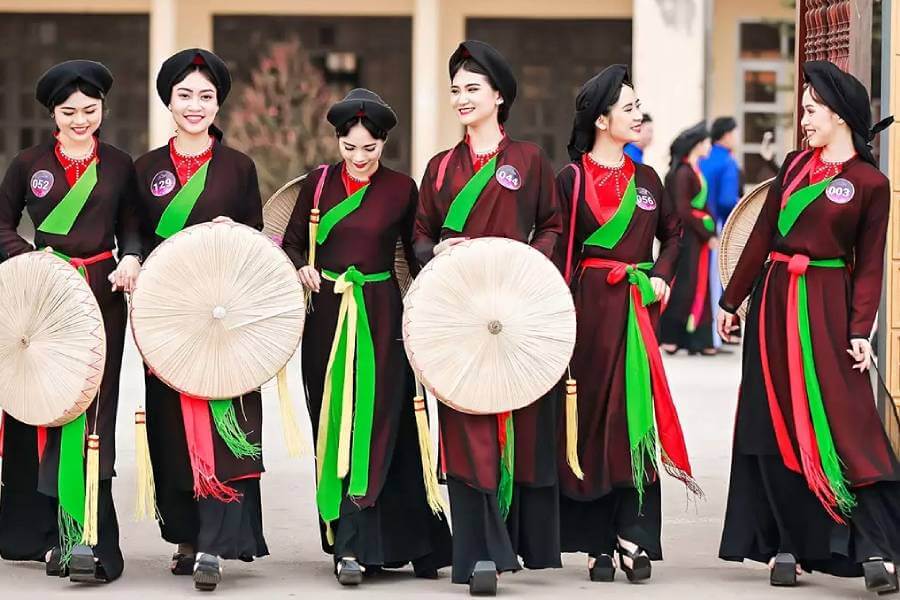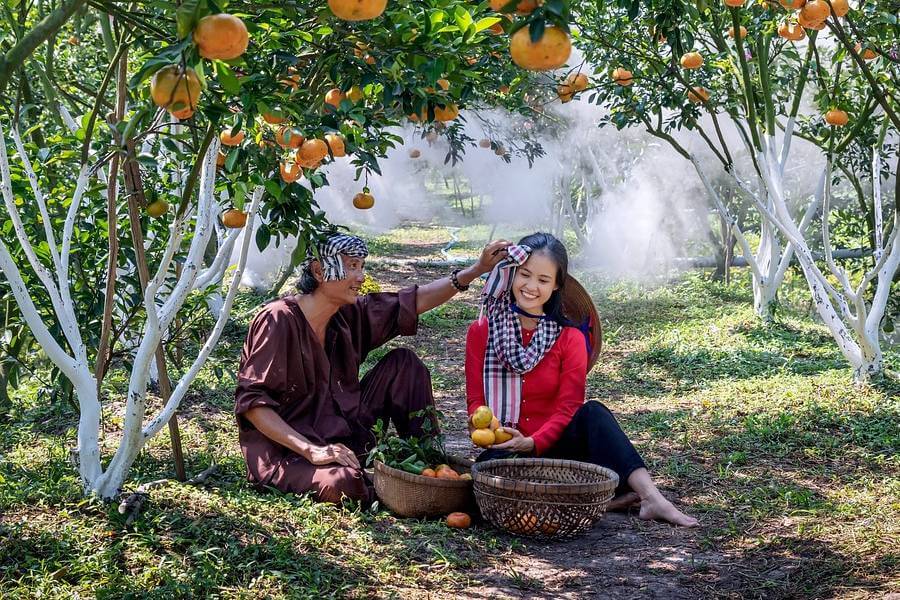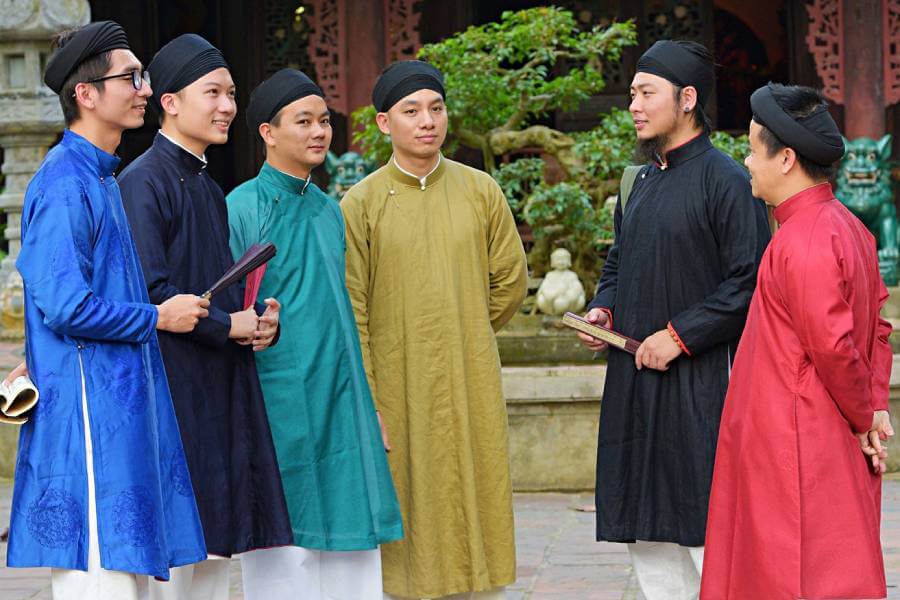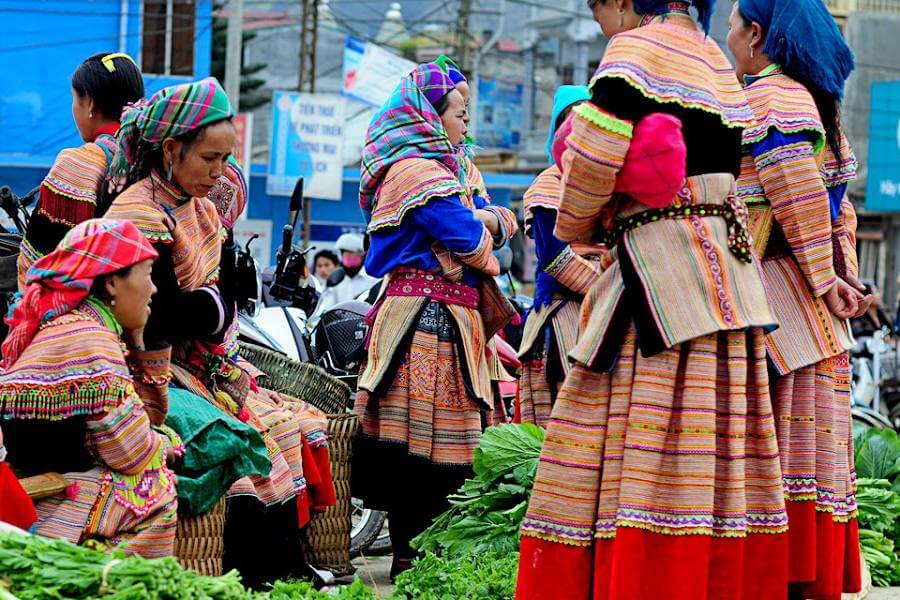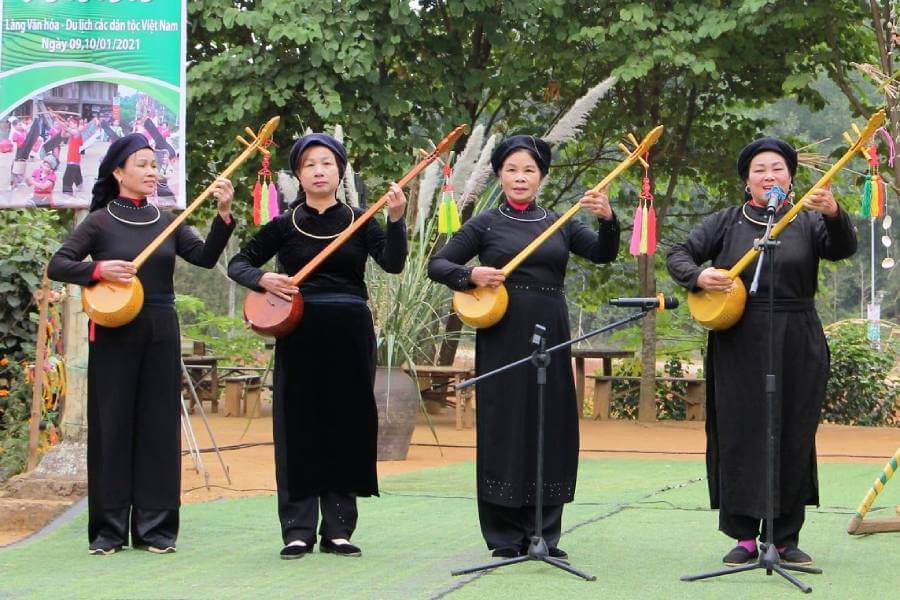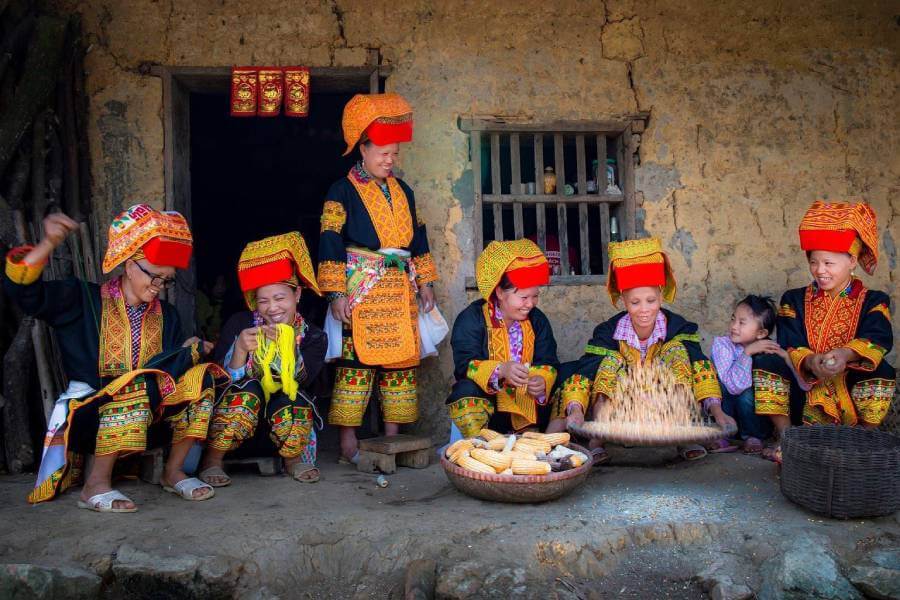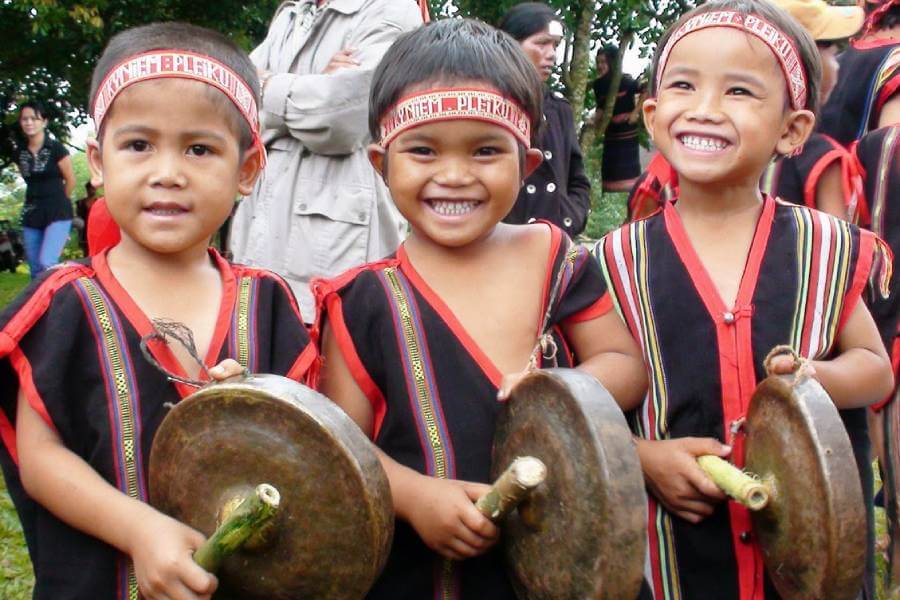Vietnam is a nation with a long and diverse history, which is reflected in its multi-ethnic population of 54 groups. This diversity is vividly demonstrated through the range of traditional costumes worn throughout the country. Each costume tells a unique story and provides insight into the group’s history and way of life. In this article, Viet Dan Travel will take you on a journey to explore the beauty and distinctiveness of Vietnam’s traditional costumes, while also delving into their origins, history, and cultural significance.
Vietnam Traditional Costumes for Female
Ao Dai – The Iconic Vietnamese Costume
Ao Dai is the most recognizable Vietnamese traditional costume and is often worn by women on special occasions such as weddings and festivals. The Ao Dai is a long, form-fitting tunic that is split at the sides, allowing for ease of movement. It is usually worn with loose-fitting pants, creating a flowing and elegant silhouette. The ao dai has been worn in Vietnam for centuries, but it was not until the 20th century that it became the iconic garment it is today. During this time, Vietnamese fashion designers began experimenting with different fabrics and designs, creating new variations of the ao dai that were more modern and fashionable. Today, Ao Dai is not only worn for special occasions but also as a school uniform and even as everyday wear. It is a symbol of Vietnamese culture and identity and is recognized around the world as a unique and beautiful garment.
Non La (Conical Palm-Leaf Hat)
The conical hat, also known as the Non La, is another iconic Vietnamese costume accessory. This hat is made from palm leaves and is cone-shaped, with a wide brim that provides shade from the sun and protection from the rain. Non La has been worn in Vietnam for centuries and is often associated with farmers and rural life. However, it is also worn by women as a stylish accessory and can be decorated with intricate designs and embroidery. The conical hat is not only a practical accessory, but also a symbol of Vietnamese identity and culture. It is often depicted in Vietnamese art and literature and is recognized around the world as a unique and beautiful symbol of Vietnam.
Ao Tu Than (Four-flapped Dress)
Ao Tu Than is not only a beautiful garment, but it also carries a deep cultural significance. The design of the dress is symbolic of the values and beliefs that were important to the people of northern Vietnam. The dress reflects the traditional family structure of society, where parents and their children were the center of the family unit. The front flaps of the dress represent the parents, while the rear flaps represent the husband’s parents. This design emphasizes the importance of family ties and respect for one’s elders. The camisole worn inside the dress is also significant. It is meant to symbolize the image of parents embracing and protecting their children in their hearts. This emphasizes the importance of family love and the need for children to always feel safe and protected.
Despite the popularity of the Ao Tu Than in the past, it is now less commonly worn in everyday life. However, efforts are being made to preserve and promote this traditional costume as an important part of Vietnam’s cultural heritage. Today, the Ao Tu Than can be seen in museums, cultural exhibitions, and traditional festivals, where it continues to capture the hearts and imaginations of people around the world with its beauty, elegance, and rich cultural significance.
Ao Ba Ba – The Southern Vietnamese Costume
The Ao Ba Ba is a traditional garment worn by people in the Mekong Delta region of southern Vietnam. It is a unique and distinct costume that represents the culture and identity of the region. The Ao Ba Ba is typically made of lightweight cotton fabric, making it comfortable to wear in the hot and humid climate of the southern region. There are many different records about the appearance and birth of the Ao Ba Ba, but in general, it is believed to have originated from the process of importing and renovating costumes from trade and commerce. The costume has been influenced by various cultural and historical factors, bearing the imprint of the South as well as the spirit and soul of the Vietnamese people.
In the past, the Ao Ba Ba was worn mostly by farmers and laborers in the Mekong Delta, but it has since become a symbol of southern Vietnamese identity and culture. It is often worn by performers in traditional music and dance performances and is also popular among tourists who want to experience the local culture. Today, the Ao Ba Ba continues to be worn by some people in the Mekong Delta, particularly older generations, and efforts are being made to preserve and promote this traditional costume as an important part of Vietnam’s cultural heritage.
Vietnam Traditional Costume for Male
One of the most iconic traditional costumes for men in Vietnam is the Ao Dai. This is the male version of the Ao Dai, which is the national costume of Vietnam and is also a well-known costume for women. The Ao Dai is a long tunic that fits tightly around the torso and flows loosely to the ground. It is often worn with loose-fitting pants and a headpiece. The Ao Dai is commonly worn for special occasions such as weddings, Tet (Vietnamese Lunar New Year), or other formal events. It is also worn by schoolboys as a uniform in schools across Vietnam.
Vietnam Traditional Costumes for Ethnic Minorities in Vietnam
Hmong Ethnic Group’s Traditional Costume
The Hmong costume is not only a symbol of ethnic identity but also represents the rich cultural heritage of the Hmong people. The embroidery on the tunic and pants is typically done by hand, with each design telling a unique story or representing a particular aspect of Hmong culture. The Hmong costume is typically worn on special occasions such as weddings, festivals, and other cultural events. However, it is also common to see Hmong people wearing their traditional costumes in their daily life, particularly in rural areas. In recent years, the Hmong costume has gained popularity in the fashion industry, with designers incorporating Hmong embroidery and fabrics into modern designs. This has helped to raise awareness and appreciation for the Hmong culture and their traditional costume.
Traditional Costume of Tay Ethnic Group
The traditional costume of the Tay ethnic group is subdued and simple. In general, the Tay people often wear clothes made of indigo-dyed cotton, so the dominant color of their attire is indigo. Women usually wear headscarves, wrap dresses with a belt, and accessorize with silver necklaces, bracelets, and anklets. The predominant color of the men’s attire is indigo, and when attending events, men wear a five-panel long shirt that hangs down to the knees, with five buttons on the side, made of silk or tussore silk.
Traditional Costume of Dao Ethnic Group
In addition to the distinctive outfit, the Dao ethnic minority is also well-known for its intricate weaving techniques and embroidery skills. The embroidery on their traditional costume often features intricate geometric patterns and motifs, and each village or region has its own unique embroidery style. The silver jewelry and accessories worn with the costume are also an important part of their cultural identity and are often passed down through generations. The Dao ethnic minority’s traditional costumes and handicrafts are recognized as an important part of Vietnam’s cultural heritage and are celebrated and preserved by the Vietnamese government and various cultural organizations.
Other Ethnic Minority Costumes
Other ethnic minority groups in Vietnam also have their unique traditional costumes. For example, the Cham costume, made of silk and decorated with precious stones, is another example of Vietnam’s rich cultural diversity. The Bahnar ethnic group in the Central Highlands of Vietnam also has colorful costumes with intricate patterns and designs. The traditional costumes of Vietnam’s ethnic minority groups are not only an expression of their unique cultural identities but also reflect the history and lifestyle of these communities. Through their costumes, embroidery, and jewelry, these ethnic groups showcase their artistry and creativity, and their traditional costumes play a crucial role in preserving and promoting their cultural heritage.
Vietnamese traditional costumes are a beautiful and important part of the country’s culture and history. From the iconic ao dai to the practical and stylish conical hat, these costumes tell a story about Vietnam’s past and present. Viet Dan Travel – Trusted Vietnam DMC that offers a variety of cultural tours and experiences, including the opportunity to learn about Vietnamese traditional costumes.

